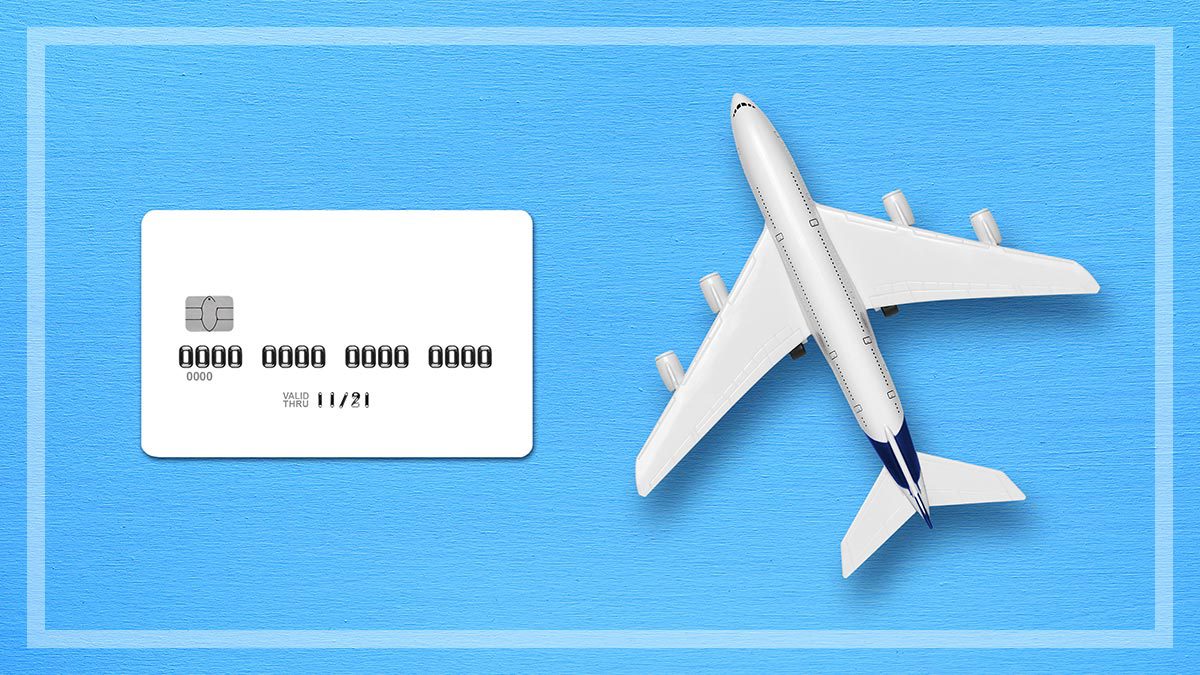Need to know
- Travel money cards are debit cards you can load with foreign currencies and use for purchases and cash withdrawals overseas
- They’re offered by banks, airlines and financial services, but they vary in terms of fees, available currencies and exchange rates
- We look at the best travel money cards, including those that offer the lowest fees and most currencies
Planning a trip overseas and wondering how you’ll pay for things when you get there?
Travel money cards have long been one of the most popular spending solutions for Australians heading to foreign shores.
Here, we explain what travel money cards are and how they work.
And, if you think some prepaid plastic could suit your next journey, we’ve compared the most popular options on their fees, obligations and whether they support the currencies of the destinations Aussies visit most.
It’s worth noting that in some cases exchange rate margins for travel money cards can be high and a no-fee debit card is often a better option (although beware – the debit cards from the major banks are not a good option for overseas use).
What is a travel money card?
A travel money card is a card you can load with money in different currencies. You can then take it overseas and use it like a regular debit card to spend and withdraw money in those currencies.
These prepaid cards are offered by banks, airlines, foreign exchange retailers and other financial institutions.
All the common cards we’re comparing here are operated by either Mastercard or Visa, so you’ll be able to use them wherever you can use most debit or credit cards.
You can load a travel money card with multiple currencies at the same time and manage it via a connected app or website, allowing you to top up your balance or convert it into different currencies on the go.
Things to watch out for
Loading up on a currency before you go overseas can mean you’ll prevent exchange rate volatility playing havoc with your holiday budget, but all travel money cards still come with fees.
Different cards also support different currencies, so make sure you choose one you can use in the destinations you’ll be visiting.
Each provider also charges different rates for converting the money on your card into different currencies and these exchange rates can fluctuate and change day-to-day.
Finally, most card providers set a minimum amount you have to put onto your card when you first load it or when you’re topping it up.
CHOICE tip: Unless you plan to use one in Australia or travel overseas often, travel money cards are better suited for longer trips. They usually won’t be worth getting if you’re only taking a one-off short trip, as some come with fees for closing or inactivity.
Travel money cards pros and cons
Pros:
- You can avoid exchange rate fluctuations disrupting your budget during your trip by preparing spending money before you go.
- You can have money to use in multiple countries on the same card.
- You won’t have to risk using cards linked to your Australian bank account overseas.
- You can avoid the likely multiple conversion fees you’ll have to pay if you take Australian Dollars (AUD) or an Australian card from one of the major banks to spend with overseas.
- You won’t have to carry large amounts of cash.
Cons:
- You might have to pay fees to open and close your account or get the card.
- You’ll likely be charged for ATM withdrawals, topping up or exchanging money on your card.
- The currency of the country you’re visiting may not be supported by any travel money cards.
- A travel money card won’t be useful if you can’t access ATMs or card payment facilities in your destination.
CHOICE tip: Some debit and credit cards issued by Australian banks can also make good overseas spending solutions. If you already use one of these at home, you could be better off taking it overseas instead of getting a travel money card.
How we compare travel money cards
We look at the most popular travel money cards and show which ones will charge you fees for:
- opening an account
- getting access to a card
- loading money onto your card
- exchanging money on your card into a different currency
- making ATM withdrawals
- not using the card for a period of time
- cashing out or closing the card.
When a card charges you for any of these actions, we tell you how much it’ll set you back.
Then, we tell you the minimum amount you’ll have to load onto your card every time you want to put money on it.
After that, we look at how many currencies you can load each card with.
All the cards listed here support the currencies of popular destinations including New Zealand, the UK, the USA, Thailand, Europe and Japan, as well as AUD.
But some are unique for letting you load the legal tender of other popular travel spots, such as Indonesia and Fiji.
Finally, it’s worth noting that two of the newer products listed here (Wise and Revolut) can also be considered multi-currency accounts.
We’ve included them here because they market themselves as travel money cards and perform the same functions as their more traditional competitors.
The travel money card with the lowest fees
Commonwealth Bank Travel Money Card
This card only charges users in one instance: $3.50 for ATM withdrawals overseas. However, it’s only available to Commonwealth Bank customers.
The travel money card supporting the most currencies
Wise Personal Account
This card lets you hold, spend in and convert between 47 currencies.
Travel money cards compared
Any % charges outlined below are levied against the value of the transaction you’re performing. Any dollar value charges are in AUD.
We’ve left off the fees you’ll incur if you perform a transaction in a currency you haven’t already pre-loaded.
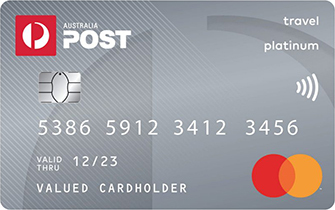
Australia Post Travel Platinum Mastercard
Fees
- Loading: $5 if using a debit card online, 1% if using BPAY, 1.1% if loading AUD instore. Free methods, including bank transfer, are available.
- ATM withdrawals: 2.95% within Australia, $3.50 or local currency equivalent overseas.
- Cash out/closing: $10
Minimum load: $100
No. of currencies supported: 11
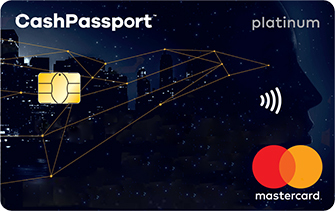
Cash Passport Platinum Prepaid Currency Card
Fees
- Loading: 1.1% or $15 (whichever is greater) instore, 0.5% if using a debit card online. Free methods, including bank transfer and BPAY, are available.
- ATM withdrawals: 2.95% within Australia, various charges overseas, depending on the local currency.
- Cash out/closing: $10 if done manually, free online.
Minimum load: $100
No. of currencies supported: 11
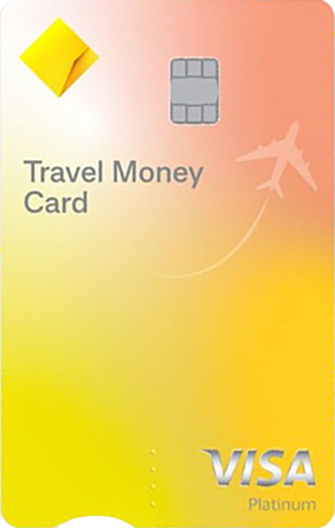
Commonwealth Bank Travel Money Card
Fees
- ATM withdrawals: $3.50 in local currency equivalent overseas.
Minimum load: $50 when you first load the card, $1 for subsequent top-ups. Money must be loaded from another Commonwealth Bank account.
No. of currencies supported: 16. The only card we looked at supporting the Fijian Dollar, one of only two supporting the currencies of China and Vietnam, one of only three supporting the currencies of Indonesia and India.
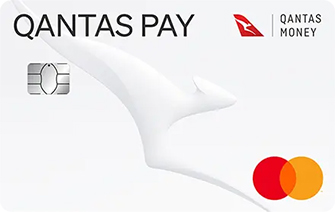
Qantas Pay
Fees
- Account opening and card access: $99.50 if you’re not a Frequent Flyer member. Free for Frequent Flyer members.
- Loading: 0.5% if using a debit card. Free methods, including bank transfer and BPAY, are available.
- ATM withdrawals: Various charges overseas, depending on the local currency.
Minimum load: $50
No. of currencies supported: 11
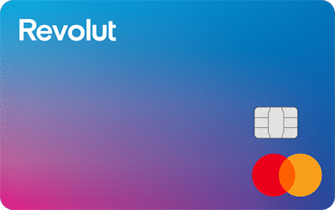
Revolut Standard Account
Fees
- Physical card delivery: $4.99
- Loading: 1% if using an Australian credit card, 2–2.25% if using a foreign credit or debit card. Free methods, including bank transfer and Australian debit card, are available.
- Exchange: Up to 1.5% after $2000 has been exchanged in a month, depending on the time the exchange occurs.
- ATM withdrawals: 2% or $1.50 (whichever is greater) after you’ve made five withdrawals up to $350 in a month.
Minimum load: None
No. of currencies supported: 34. One of only three cards we looked at supporting the currencies of Indonesia and India.
Note: We’ve previously seen Revolut offer better exchange rates on popular currencies than most other travel money cards.
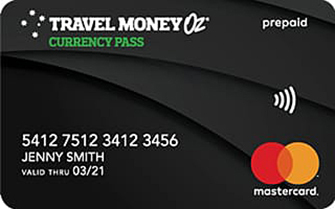
Travel Money Oz Currency Pass
Fees
- Loading: Initial load online or instore is free. Up to 1.1% if reloading using Travel Money Oz app or website, 1% if using BPAY. Free reload methods, including bank transfer and instore, are available.
- ATM withdrawals: 2.95% within Australia, various charges overseas, depending on the local currency.
- Cash out/closing: $10
Minimum load: $20
No. of currencies supported: 10
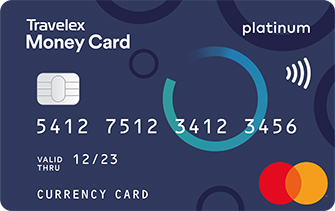
Travelex Money Card
Fees
- Loading: 1.1% or $15 (whichever is greater) when loading AUD instore. Instore loads of other currencies are free. 1% if using BPAY and not via the Travelex website or app. Free methods, including via the Travelex app or website, are available.
- Inactivity: $4 per month if you haven’t used the card in 12 months. No fee if card balance is zero.
- Cash out/closing: $10
Minimum load
- $350 when first loading the card online or via the app ($100 if done in-store)
- $50 for subsequent top-ups
No. of foreign currencies supported: 10
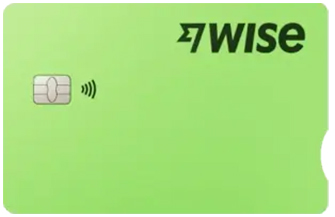
Wise Personal Account
Fees
- Card access: $10
- Loading: Free for AUD, but various fees for some other currencies.
- Exchange: From 0.33%, depends on currency and amount being exchanged.
- ATM withdrawals: 1.75%, plus $1.50 after you’ve made two withdrawals of up to $350 in a month.
Minimum load: None
No. of foreign currencies supported: 47. One of only two travel money cards we looked at supporting the currencies of China and Vietnam, one of only three supporting the currencies of Indonesia and India.
Note: We’ve previously seen Wise offer better exchange rates on popular currencies than most other travel money cards.
CHOICE tip: If a travel money card charges you for using another card or BPAY to load it, see if bank transfer is an option. This is often free.
Tips for using a travel money card
- Make sure the places where you’re planning to use your card have card payment facilities or ATMs.
- Make sure the card supports all the currencies you’ll need (also consider stopovers).
- Compare the exchange rates offered by different cards for the currencies you’ll be loading.
- Try to load your card with the right currencies and amounts on days with good exchange rates, to make the most of your money.
- Make sure you can reload your card overseas in case you run out of funds while travelling.
- It may be more convenient to choose a card that has an app that can be linked to your bank account.
- Be aware of fees you may be charged for making ATM withdrawals.
- Avoid loading more money than you’ll need, as some cards charge you to get your balance back.
- Remember to cancel the card once you’re finished your trip, as some cards charge inactivity fees.
- Be mindful that you still may need a credit or bank debit card, as travel money cards may not be accepted as security for hotels and car rental agencies.
